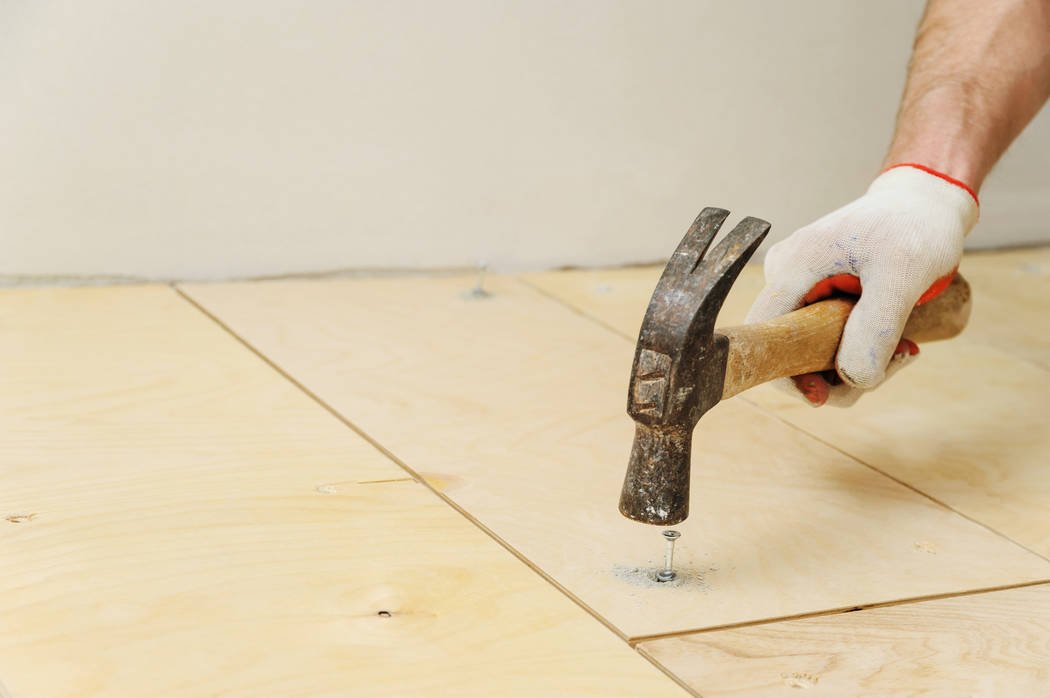Subfloor will tell tale of squeaky floor

Q: We have several squeaky floors throughout our house, along with a stair step that squeaks. Anyway, we are getting new carpet and thought that now is the time to get rid of the noise. How should we approach this job?
A: When I was a teenager in my parents’ two-story house, there was a problem. When we would come home late, the squeak at the top of the stair landing would give us away.
We never did fix the squeak, but we were as adept as gymnasts at leaping over the squeaks to avoid waking the folks. It was like running through a minefield.
Since you are getting new flooring, pull up the carpet. Once the carpeting is removed, the subfloor will tell the story. The subfloor lays atop joists that span the length of the floor. The subfloor is nailed to the joists at regular intervals, and then the padding and carpet go on top of the subfloor.
Squeaks have several potential causes, but the most common is when there is a gap between the subfloor and the joist it sits on. When someone steps on this area, the subfloor moves downward until it contacts the joist, which stops the downward movement.
On its way down, the subfloor will ride along the shank of one or more nails, causing a nice squealing sound. When a person’s weight is removed from the subfloor, the floor flexes back up and squeaks along the way.
So the challenge is to eliminate the movement.
With the subfloor exposed, you will see a trail of nails in a line that should connect the subfloor to each joist. Not all the nails will hit the joist, which makes movement more likely. Framers use nail guns that shoot nails as fast as an M-16 on full auto, and then they often “bounce fire” the gun on top of the subfloor, which makes for less-than-accurate nailing.
The cure for your floor is a couple of deck screws. The general location of the squeak will be obvious. Judging from the line of nails, you should be able to drive a couple of screws into the joist. If you want to get scientific about it, you could run a stud-finder across the floor to determine the exact location of the joist.
If you have access to the joists beneath the subfloor, you can fill in the gap between the joist and the floor with shims. The only problem is that you may have to cut a hole in the ceiling below to gain access. This may be the only option if you have, for example, vinyl flooring that you don’t want to patch and repair.
If you have access to the joists, tap a few shims into the gap to stop the movement. Tap them until firm but not so much that they lift the floor.
If you have a squeak and do not plan to replace the carpet and do not have access to the joists, you can either peel back the carpet to get a clear view of the subfloor, shoot nails through the carpeting into the joist, or drive screws with tapered heads through the carpet and through the pad.
If you pull the carpet back, you create the chore of stretching it back on the tack strip and tucking it. If you choose to install a screw through the carpet, you risk creating a hole that can’t be covered up (also, the pad and/or carpet will sometimes wrap around the threads of the screw, making a small depression in the carpet).
The solution that creates the least follow-up work is to shoot through the carpet and into the joist with a nail gun. Try 16-gauge, 2½-inch finishing nails. Hold the gun at an angle, and shoot the nails into the joist. Turn the gun to the other side of the joist, and shoot nails at the opposing angle.
This strategy also has its consequences: You could shoot through a pipe or a cable and really compound your problem. Come to think of it, maybe a little squeak isn’t all bad.
Mike Klimek is a licensed contractor and owner of Las Vegas Handyman. Questions may be sent by email to handymanoflasvegas@msn.com. Or, mail to 4710 W. Dewey Drive, No. 100, Las Vegas, NV 89118. His web address is www.handymanoflasvegas.com.
Do-it-yourself
Project: Fix squeaky floor
Cost: Under $10
Time: About an hour
Difficulty: ★★













